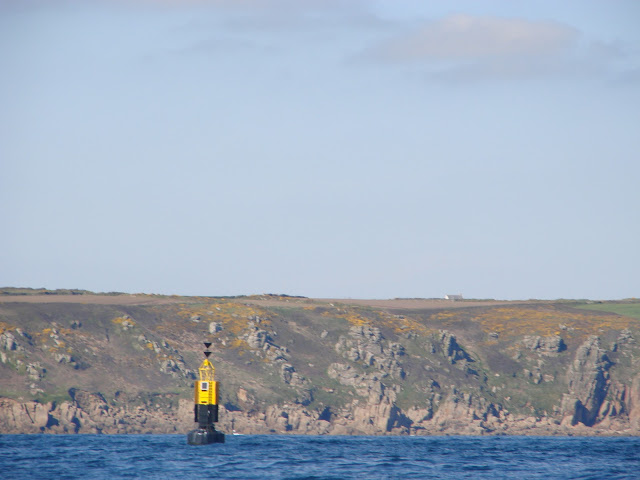Eight months
later and I am planning my next voyage, this time rowing round the most
westerly tip of England over a four days, as a sponsored rowing in aid of
CASPA, a charity which helps children with autism and their families in South East England. It is not a voyage to consider lightly because of the way
the coast sticks out into the Atlantic Ocean, with potentially large waves
rolling in and meeting complex tidal rips and reefs. So I will need a calm sea
and the good fortune I had crossing the English
Channel.
Accounts of this voyage and the charity event can be found on http://PicoMicroYachtLandsEnd.blogspot.co.uk and the charity
event on http://www.justgiving.com/PicoMicroYacht and on
http://fourdaysrunning.blogspot.co.uk/
The total distance will be 41 nautical miles, from Portreath, past Land's End and to St Michael's Mount. Assuming my three knot average the time taken will be between 13 and 14 hours. But this time it should be easier because I am spreading it over four days.
Why does it say 'fourdaysrunning' in the picture above? Well, about 20 people will be simultaneously running along the coastal path as their part in the charity event. They will be looking down on me as they clamber along the cliff paths. They have the most difficult job.
My speed is of interest and I have been pondering why I average three knots. The theoretical speed of a boat is fixed by the length, unless it gets up on a plane, because as the boat speed increases, so does the size of the bow wave, and therefore so does its wavelength. When hull speed is reached, a boat in pure displacement mode will appear trapped in a trough behind its very large bow wave and not be able to go any faster.
It can be calculated by the formula:
where:
- "
 " is the length of the waterline in feet, and
" is the length of the waterline in feet, and - "
 " is the hull speed of the vessel in knots
" is the hull speed of the vessel in knots
- My boat is 12.5 foot long, so my theoretical maximum speed is 4.7 knots - If I sprint I can get up to just over 4 knots as a reasonably fit mid 50 year old, so I suppose I settle down and do 3 knots, as a 'jogging' speed.
I wanted to find out the first person to row
the Channel Solo and how long it took. I found the answer on a website called
inspired by rowing - http://www.inspiredbyrowing.org.uk/?location_id=1
It was
Samuel Osborne in 1888, from Dover to Wimereux, taking 13 hours.
Times dropped dramatically when using very
calm weather and rowing shells. For example, in 1911the Rev Sidney Swann
crossed from Dover to Cap Griz Nez in three hours and 50 minutes.
In 1983
Ivor Lloyd crossed from Folkstone to Cap Gris-Nez in three hours and 35
minutes, creating a new record, his trip interrupted by two destroyers and an
aircraft carrier returning from the Falkland war.
The first crossing by a woman was by Guin
Batten, the same route, taking 3 hours 14 minutes in a resolute racing shell
which weighed only 14 kilograms.















